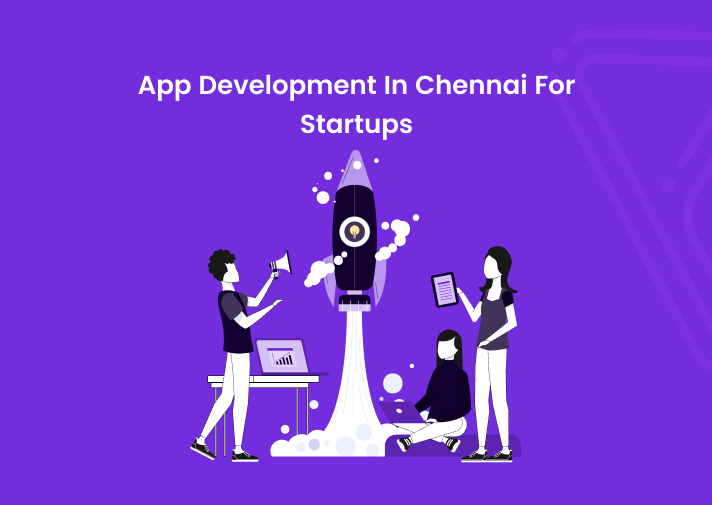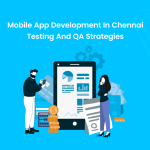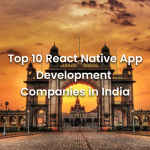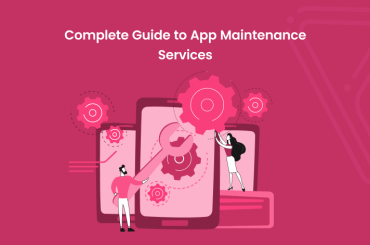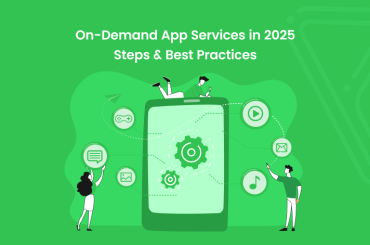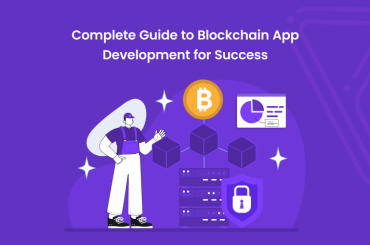Mobile app development is an intricate process which requires the understanding of multiple concepts from UI/UX design to backend integration and performance optimization. This blog dives deep into the process of app development in Chennai for startups.
Mobile App development requires the understanding of concepts such as UI/UX design, backend development, data management, etc. Understanding these concepts are essential for creating a successful mobile application that stands out in this competitive business market.
If you’re looking for an App Development Company in Chennai to bring your app idea to life, Pyramidion can help you every step of the way.
App Development In India For Startups
Startups always look for strategies to grow their business. One such way to grow their business is to invest in making a mobile app for their business. It attracts users and makes them aware of the services that they are providing.
App Development Process in Chennai for Startups

The App Development Process is the process of creating mobile applications from requirements analysis to app launch. The mobile app development lifecycle consists of following stages – pre launch, frontend development, backend development and post launch.
Pre-Launch Phase
- In the pre-launch phase, we need to identify the core concept and goal of your mobile app.
- This phase influences the success of the final product.
- Developers need to have a clear vision of your mobile app and design accordingly.
- During this phase, developers will review the UI/UX design.
- It is always a good practice to ask a set of questions during each of these phases.
- These questions will help in identifying the core purpose of your mobile app and how to make your app more visible in the business market.
- Are you building an app for demo purposes or a business marketplace? This question identifies the core purpose behind building the mobile app.
- What will be the target platform and devices for your mobile app?
- To what quality level, should the mobile app be designed?
Frontend Development Phase
- The frontend development phase is the second phase of mobile app development.
- In this phase, developers work on the mobile app’s functionality, where they convert UI/UX designs into code.
- In this phase, developers review the architecture, designs, interfaces and payment gateways.
- They need to choose the right development approach where they will consider many aspects of the pre-design phase.
Backend Development Phase
- Backend development is the final phase of mobile app development.
- Backend development involves working on the server-side of a website.
- It includes managing back-end logic, APIs, databases and architecture.
- The backend consists of three components, servers, applications and database.
- Security and functionality are two of the main areas that developers focus in this phase.
- There will be multiple iterations where we need to keep a note of the first and final releases.
Post Launch Phase
- This phase is all about fixing unidentified bugs and other errors before the release of the app.
- In this phase, regular updates will be released where developers will try to test new features for the mobile app.
- User feedback provided after the release of the app can be invaluable in improving the mobile app.
- There might be some risks if post-launch support is not provided, such as decrease in user satisfaction, etc.
How To Hire App Developers For Startups?
- Identify your requirements and then decide if you need to hire freelance app developers or app developers from firms.
- Conduct technical interviews to evaluate their skills and make sure they have expertise in the platform where you want to launch the mobile app.
- Network with other people and get referrals from them to hire a trustworthy app developer who can develop apps in your budget.
- There are also some communities on reddit and stack overflow where developers connect with each other. You can reach out using those platforms.
Alternatively, consider partnering with a Mobile App Development Company in Chennai for professional expertise and a smooth development process.
App Development Tools / Software
App development tools/software differs based on the platform you want your mobile app to be launched. Using a proper tool or software for that particular platform helps in streamlining the mobile app development process.
Mobile App Development Tools For Android
- Android tools: Android tools consist of IDEs (Integrated Development Environment), Programming languages, code editors, version control systems, emulators and devices, testing tools, CI/CD tools, API and network tools, project management and collaboration tools, etc.
- IDEs: The IDEs used for the Android platform are Android Studio and IntelliJ IDEA. Java and Kotlin are the primary programming languages for the Android platform. Visual Studio Code and Sublime Text are some of the most commonly used code editors.
- Version Control Systems: The most widely used version control platform for managing any changes with code and collaborating with other developers is github. Emulators are built into Android Studio. Commonly used testing tools are JUnit and Espresso.
- CI/CD Tools : CI/CD tools are massively helpful in automating the process of building, testing and deploying apps. Most widely used CI/CD tool is Jenkins. Postman and Insomnia are some of the API and network tools used for Android app development.
- Project Management tools : For project management, Jira and Monday.com are one of the widely used tools. Collaboration tools include Slack, Microsoft Teams, etc. Tools used for Android app development and iOS app development differ in some cases.
App Development Tools For iOS
- iOS Tools: iOS tools also consist of IDEs (Integrated Development Environment), Programming languages, code editors, version control systems, emulators and devices, testing tools, CI/CD tools, API and network tools, project management and collaboration tools, etc.
- IDEs: The IDE used for the iOS platform is Xcode. Swift and Objective-C are the primary programming languages for the iOS platform. Visual Studio Code and Xcode are some of the most commonly used code editors.
- Version Control Systems: The most widely used version control platform for managing any changes with code and collaborating with other developers is github. Emulators such as iOS simulators are built into Xcode. Commonly used testing tools are XCTest and EarlGrey.
- CI/CD Tools: CI/CD tools are massively helpful in automating the process of building, testing and deploying apps. Most widely used CI/CD tools are Jenkins and Xcode cloud for the iOS platform. Postman and Alamofire are some of the API and network tools.
- Project Management Tools: For project management, Jira and Monday.com are one of the widely used tools. Collaboration tools include Slack, Microsoft Teams, etc. Some of the tools used for iOS app development are different.
Mobile App Development Roadmap For Startups
An app development roadmap gives an overview of all stages in mobile app development from brainstorming sessions to app updates and iteration phase. At Pyramidions, we provide a roadmap for mobile app development to make it easier for you to understand the process.
App Development Cost in Chennai
There are various factors that influence the app development cost in Chennai from the complexity of apps to experience of the mobile app development company. The major factors include:
- Complexity of the mobile apps
- Preferred technology stack
- Custom UI/UX design
- Preferred features and functionalities for your app
- The company’s experience.
Understanding The Mobile App Landscape
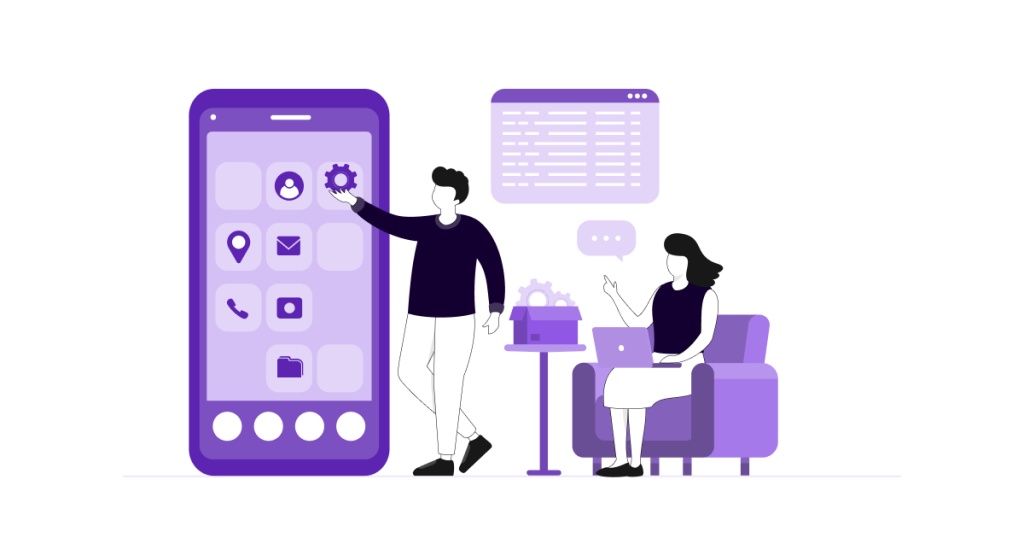
There are various recent trends in the field of mobile app development which is useful to know before embarking on your app development journey. This will help you incorporate and modify certain elements of your mobile app to make them stand out in the competitive market.
Current Market Trends For Mobile App Development For Startups
The mobile app development industry is constantly evolving. We need to stay updated with the latest trends to better serve our clients. This will help you customize your mobile app with the latest features to make your users engaged.
Integration Of Iot With Mobile App Development
Iot or internet of things refers to a network of interconnected devices that connects with each other and the internet to collect, share and act on data. Mobile apps that control and monitor automation systems for home are on the rise.
5g Technology
5G technology refers to the 5th generation of mobile networks. It is expected to provide faster speeds, lower latency and greater capacity. 5G is used for high-definition video streaming and for providing seamless connectivity.
Rise Of Wearable Technology
There has been an increase in the use of wearables like fitness trackers, smart glasses, smartwatches, VR headsets, Continuous Glucose Monitors, etc. Their wide use shows us that wearable technology is transforming various aspects of our life.
Artificial Intelligence (AI)
Artificial Intelligence (AI) makes mobile applications smarter when they are incorporated with features like image recognition, face detection, text and image classification, speech recognition and sentiment recognition.
Cloud Computing Integration
With cloud computing integration, we can enable real-time data synchronization across various platforms and devices. Cloud tools often come with analytics tools that are integrated with them to track user behavior and app performance.
Types Of Mobile Apps for Startups
There are four main types of mobile applications that a startup can build namely, native apps, hybrid apps, web apps and progressive web apps. We will dive deep into the advantages, disadvantages and examples of each type of app.
Native Apps
Native apps are apps that are specifically written for a particular OS (Operating System). These are meant to be used for a particular Operating System (OS) so it cannot be used across different Operating Systems (OS).
Advantages Of Native Apps
- Better app performance because of the usage of platform-specific code.
- It is faster to configure.
- It has very few compatibility issues.
Disadvantages Of Native Apps
- Building native apps can be time consuming.
- It requires a separate codebase for adding new features.
- Native apps are larger in size than web or hybrid apps.
Examples Of Native Apps
Google apps such as Google maps, Google drive, Google photos, Gmail, etc are some of the best examples of native mobile apps that integrate seamlessly with the Android Operating System (OS).
Web Apps
Web apps are apps that can be accessed via browsers. They do not require any installation or storage space to use the app. Web apps are generally easier to match the device’s screen size and resolution.
Advantages Of Web Apps
- It is cost-effective compared to other types of mobile apps.
- Installation isn’t required.
- It has a better reach since it can be accessed anywhere
Disadvantages Of Web Apps
- Web apps don’t function when you are offline.
- Web apps have a limited number of functionalities when compared to native mobile apps.
- Web apps might not be as fast as native apps.
Examples Of Mobile Web Apps
Netflix is an example of a mobile web app where users can stream movies and series with the use of a browser. It has features like creating and managing profiles, streaming content online and offline without the installation of the app.
Hybrid apps
Hybrid apps are like a combination of both native mobile apps and web apps. These are written using HTML, CSS and JavaScript and are then wrapped in a native container before they can be distributed to run on multiple platforms.
- They are easier to build.
- Easier to introduce new features to the codebase.
- These apps can also be accessed offline.
- It can be used on multiple operating systems.
Disadvantages Of Hybrid Apps
- They are not cost-effective
- These apps cannot perform Operating System specific tasks
- They are less interactive than native mobile apps.
Examples Of Hybrid Apps
The Twitter app uses hybrid technology to give a consistent user experience across multiple platforms. It uses web technologies as well as native features for an enhanced performance of the app.
Progressive Web Apps
Progressive web apps are like an extension of a website which we can save to our devices to use it like an app. PWAs perform better regardless of the Operating System and devices and they require very little data.
Advantages of Progressive Web Apps
- They consume very little data as compared to native apps.
- Installation of PWAs are optional and they can be accessed like web pages.
- It is easier to share PWAs by sending URLs.
Disadvantages of Progressive Web Apps
- Progressive Web Apps can lead to few hardware problems.
- It has some limitations regarding the use of certain hardware like fingerprint scanners.
- Support for PWAs are not present in some browsers.
Examples of Progressive Web Apps
Spotify’s web player is an example of Progressive Web App. It offers offline music streaming services and integration with social media platforms. Spotify’s web player has push notifications that informs users about any new updates regarding music releases.
Best Android and iOS App Developers in Chennai for Your Startup
Choosing the right mobile app development company is crucial for building high quality and innovative mobile apps. The mobile apps must perform better across a wide range of platforms like iOS and Android.
- Refer Android App Development Companies in Chennai where they provide cost-effective services.
- Refer iOS Mobile App Development Companies in Chennai for iOS app development services.
- Also refer Top Mobile App Development Companies in Chennai to get an overall idea of mobile app development companies that deliver cross-platform apps, etc.
The Startup Blueprint : Creating the Best App Development Strategy Like Steve Jobs
In order to build a successful mobile application, a proper app development strategy is essential. A well-defined strategy makes the whole process from requirement analysis till app launch much more smooth.
- Make sure that your app strategy aligns with your business strategy.
- Identify your target users’ requirements.
- Analyze your rivals.
- Ensure that data is protected with advanced security measures.
- Standardize procedures for mobile app development in order to eliminate inefficiencies.
- Decide on a mobile app platform.
- Develop apps that are scalable in future.
Challenges And Common Pitfalls In App Development
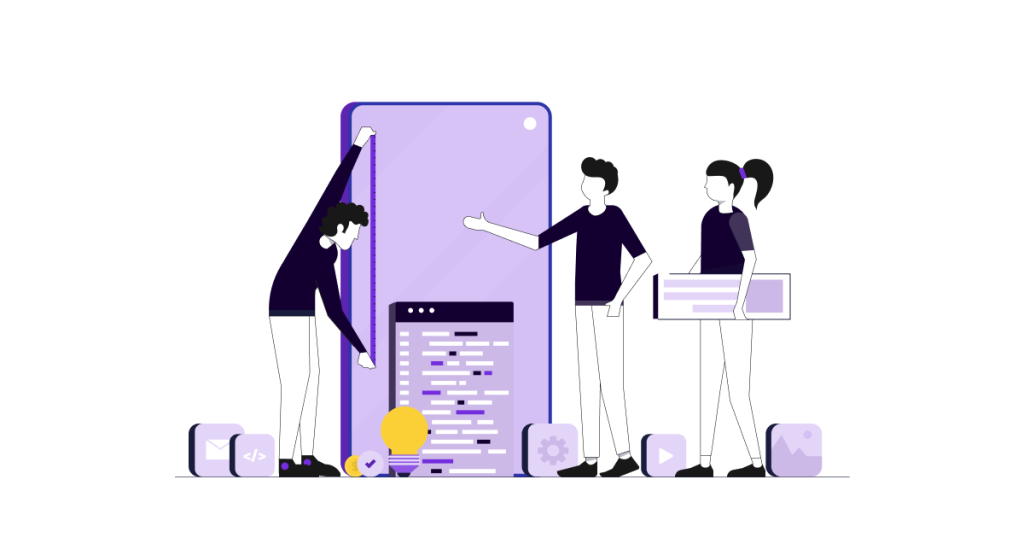
There are some common challenges and pitfalls which might come across while developing a mobile app. We should be educated enough on how to handle these challenges well to ensure a smooth process.
Budget Constraints In App Development
- Developing high quality apps on a budget is quite challenging. However, there might be some hidden charges that might appear in the app development process. It is important to identify them beforehand.
- In some cases, we might add new features to the mobile app beyond the original purpose of the app, which might add some additional charges over time. Being on a budget might not guarantee a high quality user experience which can lead to some post-launch issues later on.
- Only prioritize features that are within the scope of your mobile app. Consider launching an MVP (Minimum Viable Product) which is a basic version of the app and add features based on user feedback later on.
Time Management Issues
- Delivering an app on time can be quite challenging because of the complexities involved in building the mobile app. Ambitious deadlines can lead to rushed development of the mobile app and this can lead to issues in quality.
- Create a realistic and detailed plan with buffer periods for any circumstance that might arise in the future. Constantly update the stakeholders to make them informed about the app development process. This helps in managing expectations.
Technical Debt / Code Debt
Taking shortcuts or providing quick fixes in code can lead to some issues later on in the development process. This is known as technical debt. Document the entire process to facilitate the process of maintenance and updates.
Device Compatibility And Screen Size
- The availability of various devices with differing screen sizes and resolutions is a challenge. Designs that look better in one device might not look good in another device which might lead to inconsistent user experiences.
- Make sure to use Responsive Design Principles to make sure that the app is designed for devices with different screen sizes and resolutions. Also test the mobile app on a wide range of devices to identify compatibility issues.
Cost-Cutting Strategies For Mobile App Development For Startups
- There are some cost-cutting strategies that we can make use of to build apps on a budget. Try to adopt an MVP (Minimum Viable Product) where we create a basic version of the app at the initial stages, to save money.
- Consider outsourcing tasks like graphic design, UI/UX design and marketing to experts. Make use of open source libraries, pre-built templates and frameworks to reduce development time. Use cloud services for backend which might be cost effective in the long run.
- Try to make use of cross-platform development tools like Flutter and React Native since they can be used to develop mobile apps for both iOS and Android platforms thereby reducing development cost and time.
Freelance App Developers In India
Try to hire freelance app developers from countries like India where mobile app development is cost-effective in general. Consider freelance platforms like Fiverr, Upwork to find highly rated and cost-effective freelance app developers.
Things To Keep In Mind Before Developing An App
- We have already discussed budget allocation tips where we should build an MVP and then add features as we level up.
- We should consider the timeframe it takes to develop a mobile app.
- We need to draft a realistic and detailed project plan with buffer time to navigate through unexpected circumstances.
- Communicate regularly with the stakeholders regarding any updates to manage expectations.
Frequently Asked Questions (FAQ)
How Much Does It Cost To Start Developing An App?
At Pyramidions, the cost of developing a mobile app can range from ₹2,00,000 to ₹10,00,000 based on the complexity of the app, preferred tech stack, preferred functionality, features and the experience of the company. Refer App Development Cost in India to know more.
What Is The Minimum Budget For App Development?
At Pyramidions, the minimum budget for developing a mobile app is INR 2,00,000. In this budget, a simple app with basic features and functionalities can be designed within a span of 2 weeks to 1 month.
How Many Stages In Mobile App Development?
There are seven main stages in the mobile app development lifecycle. This includes planning, analysis, design, development, testing, deployment, maintenance and updates. By following a proper development plan, we can minimize risks.

Conclusion
In this blog, we have discussed the process behind app development in Chennai for startups. We have also discussed various market trends in the field of mobile app development, the types of mobile apps and best app development strategies.
Among the leading Mobile App Development Companies in Chennai, Pyramidion stands out for delivering exceptional solutions.
If your startup has any requirement for app developers, you can Reach Out to our expert team of developers at Pyramidions. Make the first step by requesting a free consultation with our experts today.

Having almost 10 years hands-on experience in technologies like Blockchain, Quantum security, Architecting Scalable Systems, Microservices, Metaverse, Data Science and Mobile-oriented technologies, it is also my nature to infuse some fun-filled activities aiming to optimize team communication and productivity.

